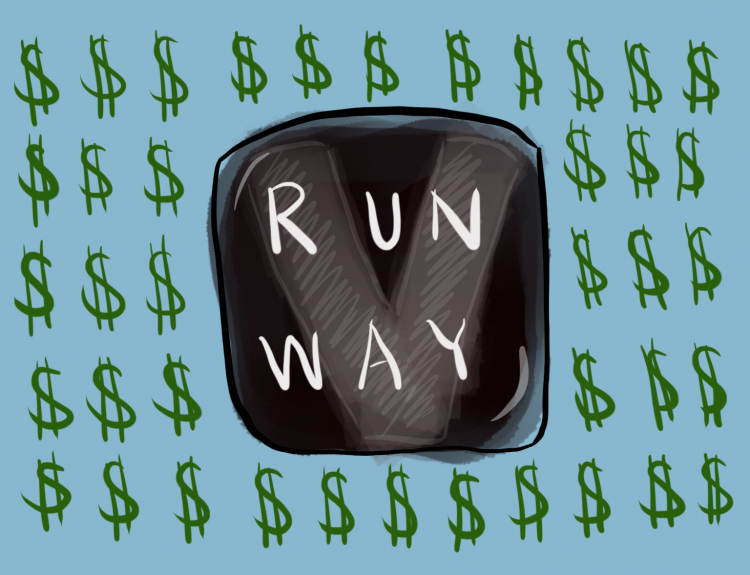Vogue Runway #ad #sponsored

Influencers and brands are required on Instagram to notify followers when content is sponsored---the same courtesy is extended to images that have been retouched in France; the viewer has a right to know when ulterior motives lurk beneath the surface of an image. So why does this same philosophy not apply to Vogue magazine?
A little under three weeks ago, BoF published an article addressing the fact that brands could now pay upwards from $20,000 to be featured on the Vogue Runway app two times a year (Spring/Summer and Autumn/Winter). This is said to have taken effect at least three seasons ago ("at least"). BoF also stated that despite paying, brands and designers still needed the final seal of approval by the team and director Nicole Phelps. However, these brands and designers that paid to be featured were not delineated in any particular way.
This poses a problem.
Any newcomer to the industry or any businesses using Vogue Runway to stay on top of trends and forecasting will see paid content on an equal playing field as brands that have been established for awhile or have actually been recognized by industry insiders based on merit.
Business of Fashion. Illustration credit: Maddie CzarnikSo, as there were only 497 total collections presented on the app for SS 19 RTW, it only made sense that I would try to take a crack at the rich upstarts trying to take even more of a hold of the industry and evaluate every. single. collection. So I did.
I ranked these ready-to-wear brands 1-5 in both categories: Craftsmanship (1 H&M - 5 Alexander McQueen) & Innovation (1 Zara - 5 Iris Van Herpen). Yes, I do realize that Lee and Iris are both couturiers, but you get the general idea of where I’m headed; something inspired. Any brand that scored at least a 5 out of 10 I considered Vogue Runway ‘approved’. It is important to acknowledge that these scores themselves actually have no staying power in the industry; they are my opinions.
Before I had even ranked the brands, however, it was important for me to narrow down my focus a little. I didn’t actually look at every single collection, just every collection that was added to the Vogue Ready-to-Wear archive since 2015—three years of semi-established, semi-approved, semi-paid content. This left me with a total of 192 brands. Out of those 192, I determined from the time they were added and the rating I gave each, that 93 out of them felt legitimate enough to be “approved”. 98 out of them felt like they either paid to be there, or they were so unremarkable that I’d be shocked if they hadn’t been paid to be featured.
Approved vs. Paid. Illustration credit: Maddie CzarnikSome of the very worst included brands like Adam Selma Sport, Miaou, 6397, La Vie Rebecca Taylor, Baja East, and RTA. Mysterious and wannabe artsy names that don’t make up for the fact that the collections had no direction and no real purpose to be living on the internet space that is Vogue Runway. Don't get me wrong; none of these collections were unwearable. The reason I found fault in most of them is because they looked like any other high street H&M and Zara creation; unoriginal and unintentional. Stay on the high street, and out of the pages and archives of Vogue. Among the new additions, there were also large companies like Longchamp, Sandro, and Madewell. These were obvious paid additions to the archive, and each one was added in 2015.
The Worst of the Worst graphic by Maddie CzarnikNot all was lost, however! Some of the greatest new brands included Matty Bovan, Estaban Cortezar, Carmen March, Noir Kei Ninomiya, Gabriela Hearst, and Mame Kurogouchi, all of which are new additions within the timeframe.
Noir Kei Ninomiya. Illustration credit: Maddie CzarnikThe highest score that I "awarded" these brands was 7/10, and only 8 out of 192 scored the highest possible. The lowest score was 2, and surprisingly only 15 brands managed it. 83 brands were between 3-4, and 68 brands got the passable score of 5. Overall, the distribution was pretty normalized, and despite my ratings not having much power, it speaks volumes that 192 brands have been added to the RTW archive (the most easily massed produced season) since 2015—98 of which I believe to have paid Vogue to be featured, however. It’s clear that there’s an influx of new brands in the industry that are not necessarily there because they deserve to be. Click here to see the entire rated lists of brands.
Matty Bovan. Illustration credit: Maddie CzarnikHaving $20,000 and the ability to name something after a conglomeration of letters and numbers or something like "Mother" is not what makes a good brand. This practice of paying the way to the top will only add to the amount of needless and aimless overproduction in the fashion industry. We need brands that stand for something; brands that have ideals and morals, that can produce quality garments with creativity, talent, dedication, and passion. These are the kinds of clothes that people will buy, love, and take care of for years to come. This being said, we also need to be promoting publications and media that respect transparency and respect the rights of the consumer.
Fashion bible or not; I don’t think any of Vogues disciples signed up for these sponsored scriptures.












